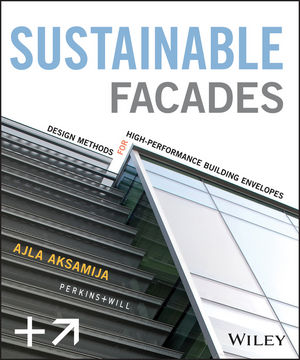After-school activity at Betty H. Fairfax High School, located in Laveen Village on the southwest edge of Phoenix, includes the usual practice sessions and tutoring. But there’s also a good deal of hanging out.
“I’m sitting here in a common area, it’s more than an hour after school’s let out, and kids want to be here,” says lead English teacher Kate Mullen. “It’s warm and inviting.”
Phoenix Union High School District #210 authorized the school in 2003 as this hyper-growth city absorbed the former agricultural community of Laveen. It was completed for $63 million, in time for the 2007—2008 academic year. The campus, which is expected to accommodate a four-year enrollment of more than 2,000, was designed by DLR Group following a decentralized model known in education and policy circles as small learning communities (SLCs).
“It’s basically breaking down a large school population into more relationship-oriented units,” explains Karl Derrah, AIA, DLR design principal. Although average class size is around 29, the schools-within-a-school model allows for more individual attention, continuity, and tracking of students, according to principal Zach Muñoz. The 51-acre campus includes three two-story SLC buildings, each of which comprises classrooms, labs, a faculty room, administrative offices, and common space. Separate structures house performing arts facilities, the gymnasium, and food services and student services. The centrally located student services building includes the dining hall and main library.
For a multi-building campus, the scheme makes relatively efficient use of space, according to the architects. In addition to the seven buildings, landscaping, and parking, they managed to work in a full complement of ball fields, courts, and a track. “It’s a tight site, but ultimately that was a great benefit,” Derrah says. “The smaller footprint is more sustainable, and it brings the buildings and students closer, so it’s easier to supervise and socialize.”
The buildings are oriented along an east-west axis to maximize daylighting. Overhangs shade windows and cool outdoor spaces in the summer without interfering with solar gain in winter. For materials, the designers opted for painted concrete masonry, corrugated steel cladding, and ample glass. The exterior and interior palettes of gray, green, purple, and yellow reflect the Sonoran Desert and nearby South Mountains and Sierra Estrella range.
Within the campus, generous fenestration and second-floor walkways connecting buildings provide sightlines that foster a sense of community and allow teachers and administrators to keep an eye on things. That openness, in combination with the density of the layout, addressed some students’ unease with the small-schools approach, according to Derrah. “In the planning meetings, students were concerned about being isolated from their friends,” he says.
The auditorium and gymnasium flank the complex, permitting off-hours use for community programs without requiring the rest of the campus to be open.
The designers followed a checklist based on LEED, but to keep costs down, they didn’t register the project, according to Tom O’Neill, DLR’s principal-in-charge. “We wanted to put all our resources toward design and construction,” he says, adding that the decentralized plan doesn’t compromise energy efficiency, as the campus is served by a central plant chiller system. Occupancy sensors reduce HVAC and lighting demand, and energy-efficient lamps complement the extensive daylighting scheme. “We plan to look at the real energy use and compare that to our models,” says DLR managing principal Bryce Pearsall, FAIA. The project also used locally-sourced products, low-VOC, and recycled materials. The landscaping mostly uses drought-tolerant native plantings, as well as drought- and heat-tolerant hybrid sod.
Eating up agricultural land may not seem like the most sustainable choice, but DLR officials say the district chose the location over urban infill sites because it serves the burgeoning neighborhoods at the city’s southwestern edge. Public transportation still lags, though. As of press time the city bus line hadn’t extended to the school.
Filling that transit gap would make Betty H. Fairfax High an even more sustainable alternative to the school-as-warehouse approach. Mullen, who moved from Chicago to teach there, says the campus sets the tone for the small-school model of pedagogy. “It feels like we want it to, like a college,” she says. “After all, they are college students in training.”











